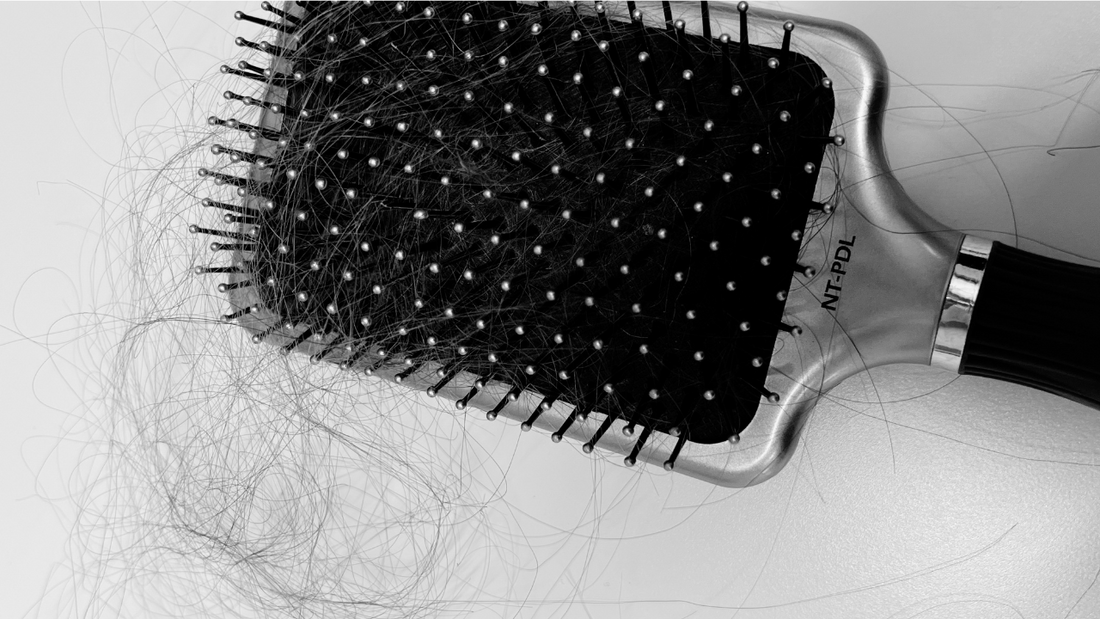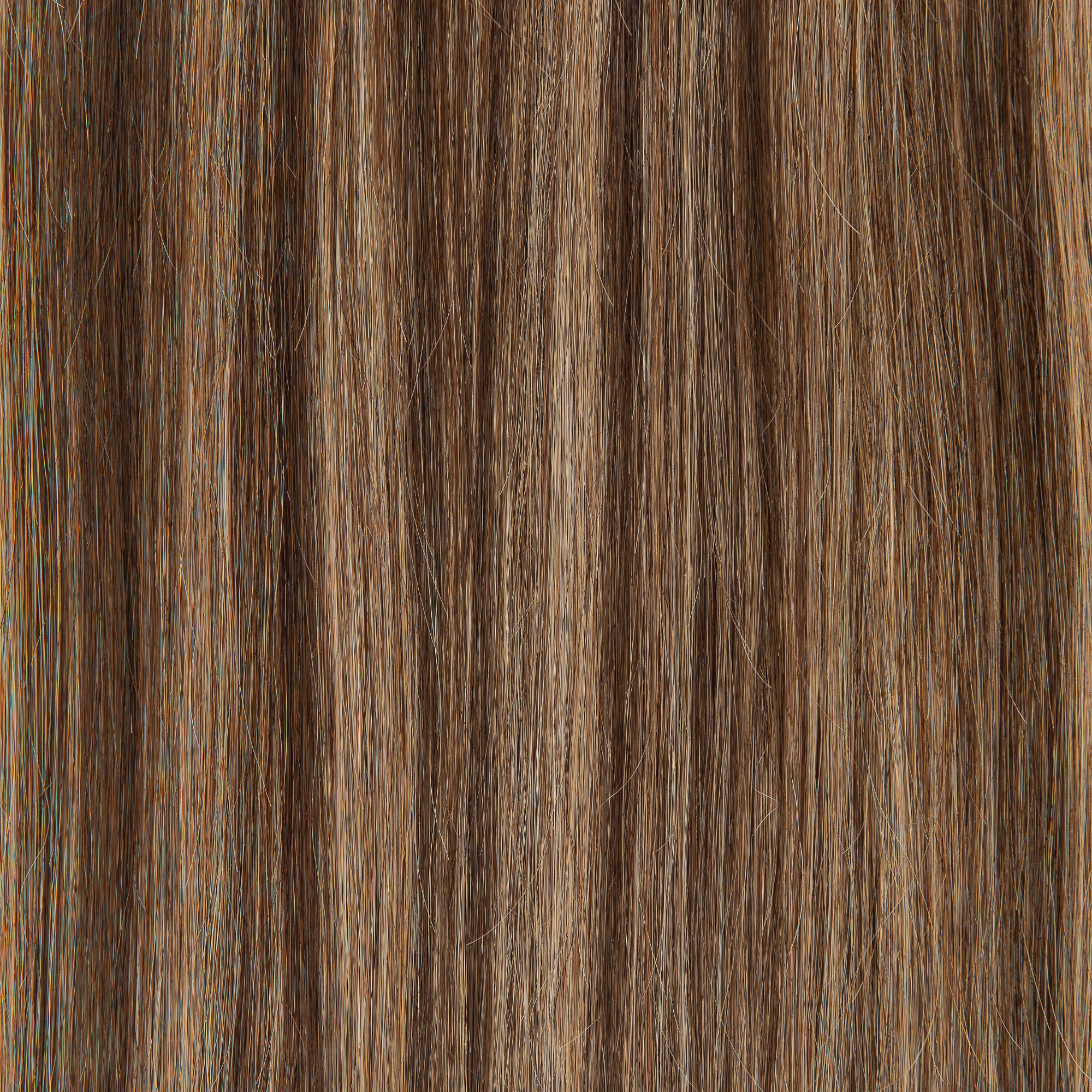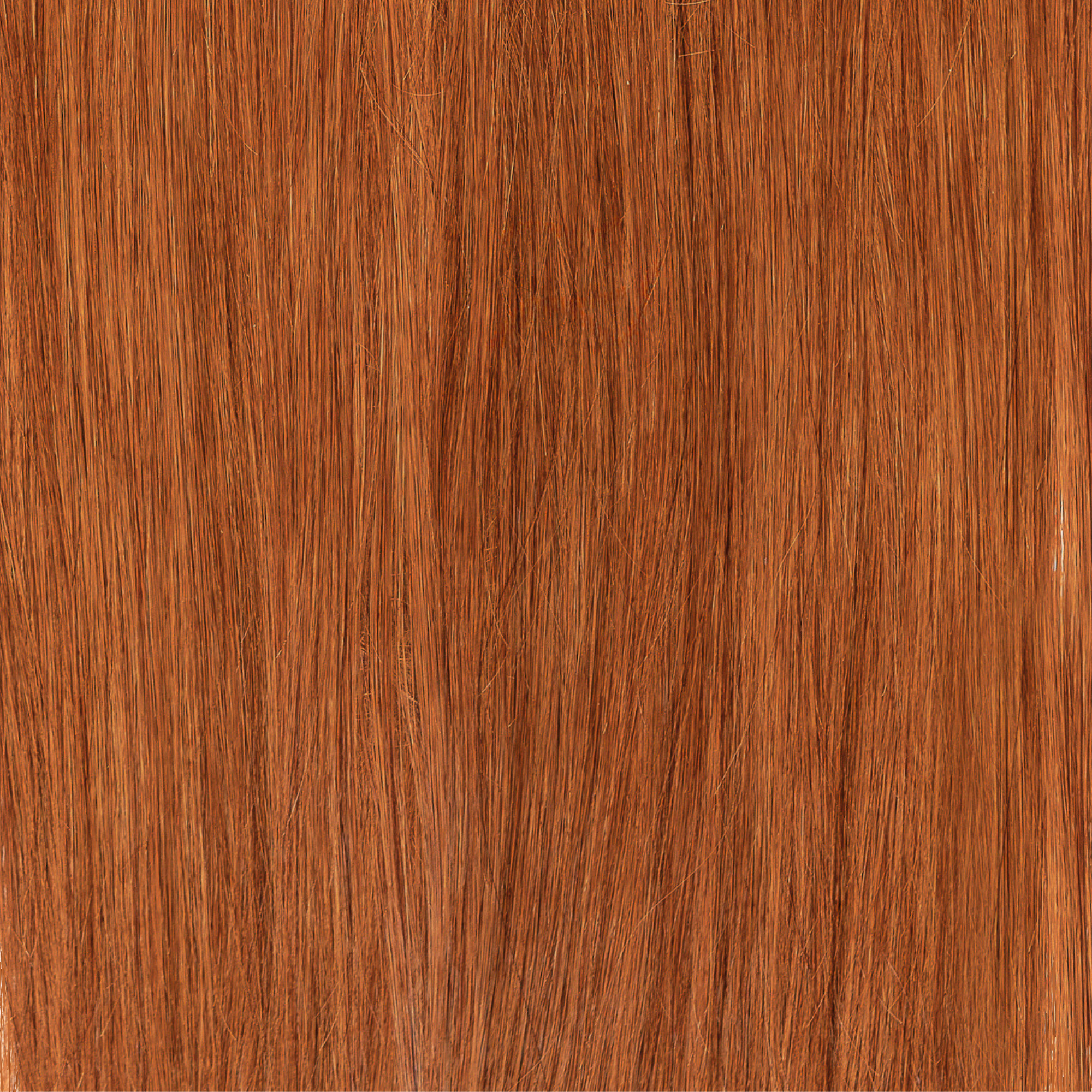
Can clip in extensions cause hair loss?
- Irene GilmanAre you considering adding clip-ins to your daily style routine but worried about potential hair loss? You're not alone. Many women of all ages share this concern. In this article, we will find out can clip in hair extensions cause hair loss, providing you with all the necessary information to make an informed decision. Let's explore how to enjoy the beauty benefits of extensions without compromising the health of your natural hair.
How Clip-In Extensions Work
Clip-ins are a favorite for those looking to instantly add volume and length to their hairstyle without long-term commitment. These extensions consist of strands of real or synthetic hair attached to small clips. These clips are then attached to the hair near the roots.
To use them, you simply section your hair, get the extensions close to the scalp, and secure the clips onto your natural strand. Clip-ins are versatile and easy to use. You can apply them in just a few minutes and remove them just as easily, making them perfect for special occasions or daily wear. However, it’s important to be aware of the connection between clip in hair extensions and hair loss, ensuring they are used properly to avoid any negative effects on your strands health.
Comparing Hair Extensions
There are several types of hair extensions, each with distinct impacts on hair health:

-
Clip-In: These are safe and minimize female hair loss clip in extensions are easily removable. They let the scalp rest nightly, making them ideal for those seeking temporary style and minimal damage.
-
Tape-In: Offering a semi-permanent fix, these pose a greater risk of hair loss due to constant tension from adhesive tapes near the roots, which can stress and thin hair.
-
Sew-In: Suitable for thicker strands, this method involves braiding and sewing extensions into the natural hair, potentially causing scalp strain and traction alopecia if too tight. It's particularly important to monitor for hair loss where hair clips are attached, as this can be a sign of tension and stress on the follicles.
-
Micro-Link: These attach wefts using small silicone-lined beads, providing a natural look but risking breakage and loss from the weight if not maintained.
-
Fusion & Pre-Bonded: They appear natural and bond with adhesives like keratin. The use of heat and chemicals poses a high damage risk, especially if poorly maintained or worn too long.
Among these, clip-ins are notably less risky, offering flexibility and ease, making them a superior choice for preserving scalp health.
Causes of Hair Loss in Clip-In Extensions
Tension and Misuse
Clip-in hair extensions offer you an easy and less damaging alternative to permanent extensions like tape-in or k-tip extensions. However, when misused they can increase the risk of hair loss associated with extensions. Understanding why and how tension causes hair loss can help you better understand how to safely use them.
Why Tension Causes Hair Loss
Tension affects the hair follicles directly. When extensions pull on the natural hair consistently, it can lead to a condition known as traction alopecia. This type of hair loss from clip in extensions occurs gradually and is often caused by the chronic pulling of the hair tightly back or down from the scalp.
With clip-in extensions, several common mistakes can lead to unnecessary tension:
-
Wearing to Sleep: Clip-ins are designed for temporary use, yet some might choose to wear them to bed. Sleeping with clip-ins can cause pulling and snagging as you move, which stresses the hair follicles overnight.
-
Swimming with Extensions: While it might be tempting to keep your styled look for poolside photos, swimming with clip-in extensions can lead to tangling and matting. The weight of wet extensions adds significant strain on the roots, especially if the hair is not properly secured.
- Reckless Tugging and Brushing: Vigorous brushing or combing, especially if the extensions are tangled, can pull on both the extensions and your natural hair. This not only risks pulling out the clip-ins but also stresses your follicles.
Proper Application Techniques
To minimize the risk of hair loss due to clip-in extensions, knowing how to properly apply and remove them are essential. Here are our guidelines:
-
Start by selecting the appropriate size of extensions for different parts of your head. Place them away from the hairline and more towards the middle of the scalp area where the hair is denser and can support the weight better.
- Open the clips fully, and gently slide them into the hair at the root. Once in place, snap them closed securely but ensure they're not pulling the natural hair too tight.
- Do not overload any single section of your hair with too many extensions or excessively large ones. Distribute the weight evenly across your scalp to reduce strain on any single
Signs of Potential Hair Damage from Clip-In Extensions
Clip-in extensions can be a game-changer when it comes to adding instant volume to your hair, but it's essential to monitor for signs of hair damage. Clip in extensions cause hair loss typically not overnight, but as a result of months or even years of frequent misuse.

Here are the key signs to look out for:
-
Disruption of Natural Hair Growth: If you notice slower growth or thinner patches where extensions are frequently attached, it could signal long-term damage to your follicles.
-
Alopecia Symptoms: Be alert for thinning hair or bald spots in areas where the extensions clip in. This could indicate traction alopecia, caused by persistent tension on the hair.
-
Scalp Stress: Symptoms like redness, soreness, or bumps near attachment sites suggest that the clips may be too tight or worn too often.
-
Increased Shedding: An increase in shedding or finding hairs caught in the clips could mean the extensions are pulling too hard on your natural hair.
-
Hair Breakage: Short, broken strands around the clip areas might be a sign of hair shaft stress due to the extensions.
Preventive Tips
To minimize the risk of damage and maintain healthy hair, consider these tips:
- Rotate the placement of clips to reduce stress on any single area of your scalp.
- Keep both your natural hair and the extensions clean and well-maintained.
-
If you notice any of the above signs, consult with a hair care professional for guidance.
Taking these steps can help ensure that you enjoy the aesthetic benefits of clip-in extensions safely and sustainably
Final Thoughts
Clip-in hair extensions, like those from Atelier Extensions, offer a great way to add volume and length to your hair. To maintain both your extensions and natural hair's health, it's important to apply them correctly and stick to a proper maintenance routine. Recognizing early signs of damage and practicing regular care are essential for sustainable use.
Does clip in extensions cause hair loss? Always remember, the goal is volume and length without causing harm. Should you notice any signs of damage or feel uncertain about application techniques, don't hesitate to consult a professional. By taking these steps, you can ensure your Atelier Extensions continue to provide your dream hair for every and any occasion.
F.A.Q's
Wearing clip-in extensions can potentially lead to hair loss, especially if they are worn frequently or are not properly fitted. The weight and tension of the extensions can strain your natural hair, leading to a type of hair loss known as traction alopecia. To minimize this risk, it's important to ensure that the extensions are not too heavy and that they are applied and removed correctly.
To prevent hair loss while using clip-in extensions, follow these tips:
- Choose lightweight extensions that do not pull excessively on your natural hair.
- Apply extensions in different areas of your scalp to avoid constant tension on the same hair follicles.
- Remove extensions before going to bed to reduce prolonged tension.
- Maintain a healthy scalp by regularly cleansing and moisturizing to support hair strength.
It is advisable to give your hair regular breaks from clip-in extensions to prevent undue stress on your hair follicles. Depending on how frequently you wear them, a good rule of thumb is to take a break for at least a few days after every 1-2 weeks of continuous wear. This gives your natural hair time to recover and remain healthy.
Yes, the way you style your clip-in extensions can significantly affect the health of your natural hair. Tight hairstyles that pull on the scalp can increase the risk of hair loss. Opt for looser styles that distribute weight more evenly and reduce tension. Also, avoid using high heat settings when styling both your natural hair and the extensions to prevent damage.
Yes, opting for clip-in extensions made from lighter materials can be safer for your hair. Extensions that feature a silicone base on the clips can also reduce slippage and lessen the tension needed to keep them in place. Furthermore, choosing high-quality human hair extensions can allow for more natural movement and less tangling, which helps in reducing pulling and stress on your natural hair.









